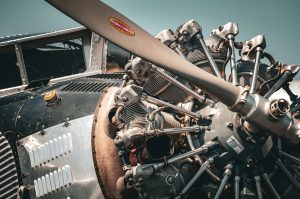The transformative power of a custom interior in a classic car
When it comes to classic cars, many enthusiasts focus on the exterior design, engine performance, and historical significance. However, one aspect that is often overlooked but can make a significant impact is the custom interior. The interior of a classic car may seem like a minor detail, but it has the power to transform the overall look and feel of the vehicle. In this article, we will explore the transformative power of a custom interior in a classic car and why it should not be underestimated.
The Importance of Custom Interiors in Classic Cars
The interior of a classic car is just as essential as its exterior. It is where the driver and passengers spend most of their time, and it can greatly affect the overall driving experience. A well-crafted interior not only adds value to the vehicle but also enhances the pleasure of owning and driving a classic car.
Preservation of Originality
For some classic car owners, maintaining the originality of their vehicle is essential. However, with time, the interior of a classic car can wear out, and it may become challenging to find replacement parts. In such cases, custom interiors offer a solution. By carefully selecting fabrics and materials that match the original design, a custom interior can preserve the classic car’s authenticity while providing a refreshed and updated look.
Unlimited Design Possibilities
Unlike production car interiors, which often have limited design options, custom interiors allow for a personal touch and unique style. Classic car owners can choose from a wide range of colors, fabrics, and designs to create a one-of-a-kind interior that reflects their personality. This level of customization can add a touch of luxury, elegance, or even a vintage feel to the classic car.
Improved Comfort and Functionality
Let’s face it, classic cars were not designed with comfort in mind. Most of them lack modern features such as advanced sound systems, air conditioning, and comfortable seating. With a custom interior, classic car owners can add these modern features while preserving the car’s vintage charm. Custom interiors also allow for modifications that improve functionality, such as storage solutions and better placement of controls.
The Transformation Process
The process of transforming the interior of a classic car requires precision, attention to detail, and the right expertise. It involves four main steps: planning, disassembly, customization, and reassembly.
Planning
The first step in transforming the interior of a classic car is planning. This involves researching and selecting the right materials and design to achieve the desired look. It is essential to consider the car’s year, make, and model as well as the overall theme and color scheme.
Disassembly
Once the planning phase is complete, the next step is to disassemble the existing interior. This process requires meticulousness to ensure that no parts are damaged or lost. It is also a chance to inspect and repair any damaged components.
Customization
After disassembly, the customization process begins. This involves the installation of new upholstery, carpets, headliner, dashboard, and other components. If necessary, modern features can be added at this stage.
Reassembly
Finally, the reassembly process puts everything back together to create the finished product. This step also includes a thorough cleaning and detailing of the interior to give it a polished look.
Conclusion
A custom interior has the power to transform a classic car into a work of art. It is a way to preserve the originality of the vehicle while adding a personal touch and modern features. Whether it is for aesthetic or functional purposes, a custom interior can greatly enhance the driving experience and value of a classic car. If you own a classic car, consider investing in a custom interior to truly make it stand out.










